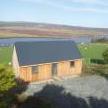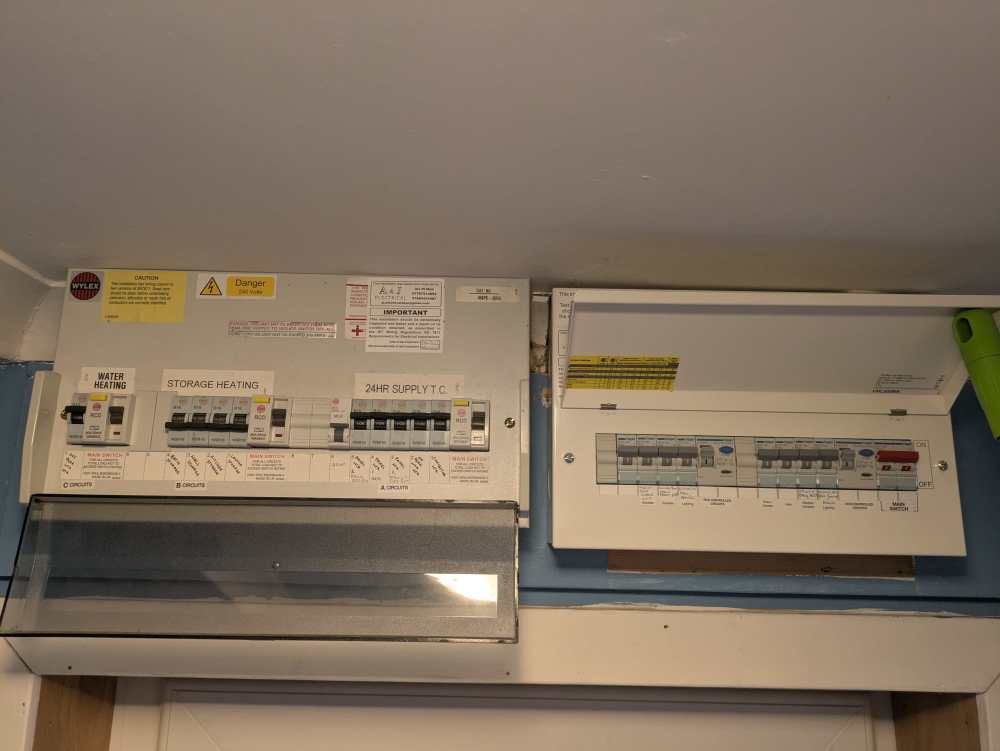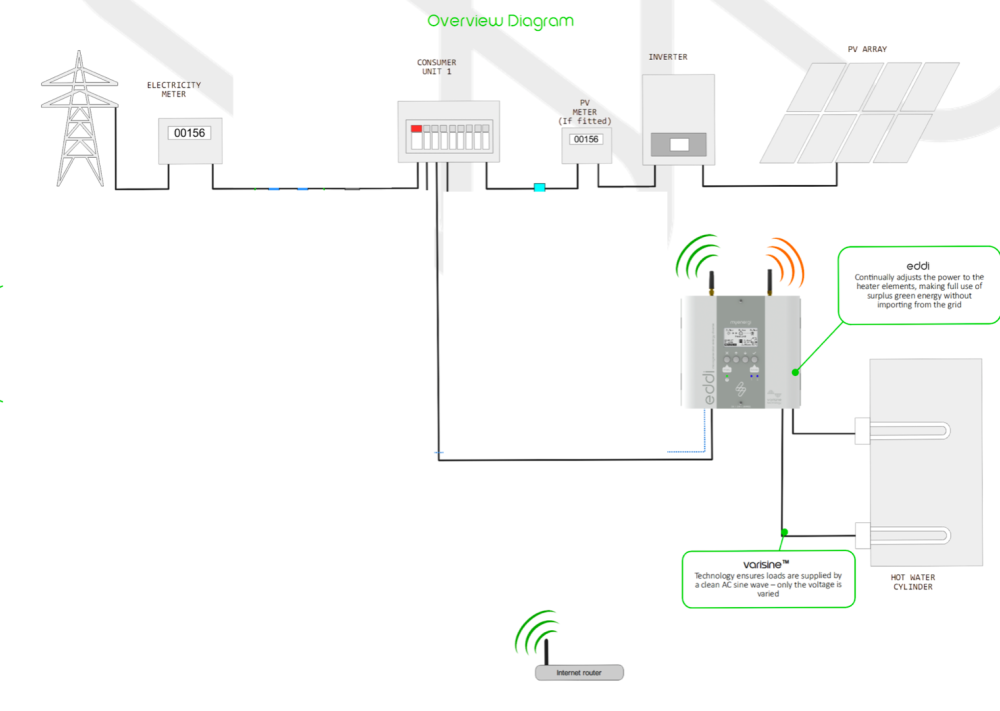-
Posts
3390 -
Joined
-
Last visited
-
Days Won
10
Everything posted by Crofter
-
It's not a hard run- just across some rough ground at the back of the garden. I'm not digging up a driveway, or even a lawn. So I don't think I'll regret it too much if I do end up having to re-do it. Anyway... cabling aside, with the rest of the installation, what would be best practise: - breaker and/or isolator up at the panels? - breaker between the Eddi and the immersion? - anything else that might not be obvious to me?
-
I appreciate that, I just thought maybe I was missing something. I'm not sure how likely an upgrade would be. I'll be maxing out my permitted development with this ground mount array, and the next sensible move would be adding something to the roof. I also have the other property which would benefit from a similar setup, and I'd likely do that project before I did any upgrades to this system. I hadn't heard that standard SWA wasn't suitable for DC. I thought that so long as you stayed within the voltage rating you'd be good. Would something like this be suitable? https://www.superlecdirect.com/6942x-6mm-2core-bs5467-xlpe-swa-pvc-cable-harmonised-black/ (the datasheet for the above cable shows DC and AC values. The 6mm2 is rated to 53A when buried in the ground, which is a lot of headroom for a system that should be generating around 15A)
-
That makes sense, thanks. I'm still wondering why the DC cables need to be so beefy. I did my initial calculations based on twelve 285w panels. That gives a minimum system voltage of 348v, and a maximum current of about 10A. Even a skinny little 1.5mm2 cable will only show a voltage drop of 1.82% over 25m. Upgrading to 4mm2 gets me down to 0.6%, and 6mm2 would be 0.45%. I just didn't think that was necessary? I could use a smaller number of larger panels, e.g. seven, giving me 234v/16A (gives a slightly smaller array overall). In this case 1.5mm2 is definitely too small (more than a 4% drop) but 2.5mm2 looks pretty good to me (2.6% drop). 4mm2 gives 1.6% drop. 6mm2 gives me a 1% drop. I've built a lot of off grid stuff where this kind of voltage drop is of no concern. but I appreciate that things are a bit different. When you have a panel pumping out 17v and you want 14v to charge a battery, you can afford to lose a whole volt somewhere and it will still work. I'll happily stump up for the chunkier cable, I just like to know why...
-
Thanks everyone. I'd initially read/heard that the long run should be before the inverter. Then somebody (on Faceache) said it was the other way round. Does the choice of panels affect this decision? E.g. if I had ten 300w panels, I'd be running about 300v DC or more. But if I had seven 500w panels instead, I'd have a lower voltage. You'd think you'd want the longest run to be where you run the highest voltage, for lowest losses and smaller cable sizes. Bear in mind I'm coming to this with fairly extensive off-grid experience so I have a certain amount of intuition which isn't necessarily helpful
-
So I've been told that it's best to place the inverter up at the array. I think I'll need to make some sort of enclosure for it due to the weather we get! I'm also a bit confused about cable sizes. By my understanding, if I have say ten panels in series, I'll have 300v minimum. For a 3kw array, that means about 10A. So I should be OK with a 1.5mm2 cable over my 25m run. But everything I read says I must use 4mm2 minimum. Am I fundamentally misunderstanding something here?
-
Are they honestly going around the country sticking in replacement meters and then walking away leaving the homeowner to pick up the tab for the re-wiring? The way this house was set up until recently, the panels heaters were the only form of heating in the bedrooms. So disconnecting those would not have been popular. I've had the A2A installed and those heaters are now defunct, but that was my choice. Will do... when the rain stops!
-
We have two CUs, the one on the left is the THTC one which is split in to two. I've just had it confirmed by OVO that we will get a single smart meter to replace the dual meters we currently have. I'd have thought that, to change to a single rate tariff, all they have to do is bill me at the same rate for everything. No re-wiring required. And just to complicate things, I want to add a diverter in to all of this. Hmmm.
-
-
So I'm going ahead with my plan for a ground mount array and a diverter. What's best practise for placement of breakers, isolators, etc? Thoughts on SWA vs a duct for the DC run? The inverter in using is IP rated but I think it's best to plan for it to be in the house anyway? It's about a 25m run from the array.
-
I'm not sure I've ever found Wikipedia to be wrong.
-
That's exactly what I've done. The A2A just runs off the cheap rate. OVO are trying to sell me their E9 plan which has off-peak dotted throughout the day, but of course none of the times really match up with when I'd want to run the A2A. And the off peak rate is only 1p less than I can get a single rate from another supplier. So the obvious thing to do is jump from THTC straight to single rate, but they aren't offering that. I'm not sure what the implications are for the wiring in the house. I mean, worst case, can't they just install whatever meters are required and just bill me at the same rate for everything that I use?
-
We're on the archaic Total Heating Total Control which was pretty common for houses using storage heaters, but is now being phased out. The Radio Teleswitch system is to be turned off imminently and we're being barraged with warnings from OVO, the electricity supplier, to get the meter swapped out for a smart meter. This is all well and good (assuming we have a good enough signal for the smart meter to work...) but they will not allow us to keep the current tariff, and are only offering us two flavours of dual-rate as a replacement. From back of envelope calculations, I can see that both will end up costing us more than we're currently spending. It looks like we'll be much better off switching to a single rate (especially once I have done my PV/diverter project) but they aren't offering that. Will I need to get them to install the smart meter first (which they won't do until I've chosen a tariff) and then move to single rate, possibly with a different supplier? Just FYI, we are using A2A heating so low overnight rates are of little use. Good for the immersion heater but that's all. What we want is the lowest possible rate accessible 24/7, as the times that we tend to run the A2A don't line up with off peak hours. And once I have my panels and diverter in place, I'm hoping that our immersion usage will drop substantially over the summer months, which is when the house is mostly occupied.
-
It's been tried. The Arnish yard up on Lewis was making jackets for offshore turbines for a few years. I don't what causes it, but any sort of manufacturing on the UK just doesn't seem to stand a chance against the competition. And it's not like we're being undercut by China on this- it seems to be most Germany and the Scandinavian countries that are building all the turbines. Not low wage, low regulation economies. So we have to choose whether to build domestically and accept the consequences (whether that be higher cost, outdated designs, slower production, etc) or outsource to somewhere else and get a better product cheaper and faster. It's not just turbines that are affected- same story for ferries. And the politicians who make these decisions are damned if they do and damned if they don't.
-
I think the ones who take the effort to engage with us plebs on the forum hey a free pass. The comment was somewhat in jest, but at the heart of it is the distinction that amateurs, generally, have both the luxury of time and the need to live with the finished product forever more. Whereas professionals must be cheap and fast if they are to stay in business. At the end of the day professionals who don't cut corners are likely to be priced out by their competitors. There aren't enough punters willing to pay more for quality workmanship.
-
"An amateur does the best job they can; a professional does the worst job they can get away with".
-
I put planings down about five years ago a steep driveway with a tight turn, in an area with high rainfall. It's held up amazingly well. I'm going to patch a few places this winter but all things considered I would certainly recommend. I find it looks pretty much like tar, nothing wrong with the look of it at all, so long as you pull out the chunks of road paint and cats' eyes...
-
What's your intended final finish?
-
I did consider Eurocell. They could do uW 1.1 for the sliding door and uW 1.0 for the window. It would have been very good value and given they have a showroom in Inverness, it would have been very easy. Ultimately, though, I spent a bit more money in order to get u values that are substantially better. And don't get me started on a certain 'big name' outfit who, now that they have my phone number, won't leave me alone. Their quote was laughably bad. The sizes bear no resemblance to what I asked for, the colours are wrong, and they won't give me u values for anything. These places operate as finance providers and don't seem to know anything about windows.
-
Assuming it's a 'cold roof' construction, where there is a loft space left uninsulated, then you will need to add insulation above the ceiling and also add ventilation for the cold space- preferably at both ridge and eaves level. If I'm correct about it being a flat ceiling and cold roof, then there's not really much advantage to doing it at the same time as you board the ceiling- you'll have to board the ceiling first anyway. Although if your loft hatch is small, you could chuck the rolls off insulation up there first. If you can't (or don't want to) fit high and low level ventilation, you might be able to put vents in the gables instead. If you've actually got a vaulted ceiling, then not much of the above applies.
-
Here's a much better plan, sell it to me 😁
-
It would be easier to drill new holes in the plastic boxes than to drill new holes in the wall, by the sound of things.






